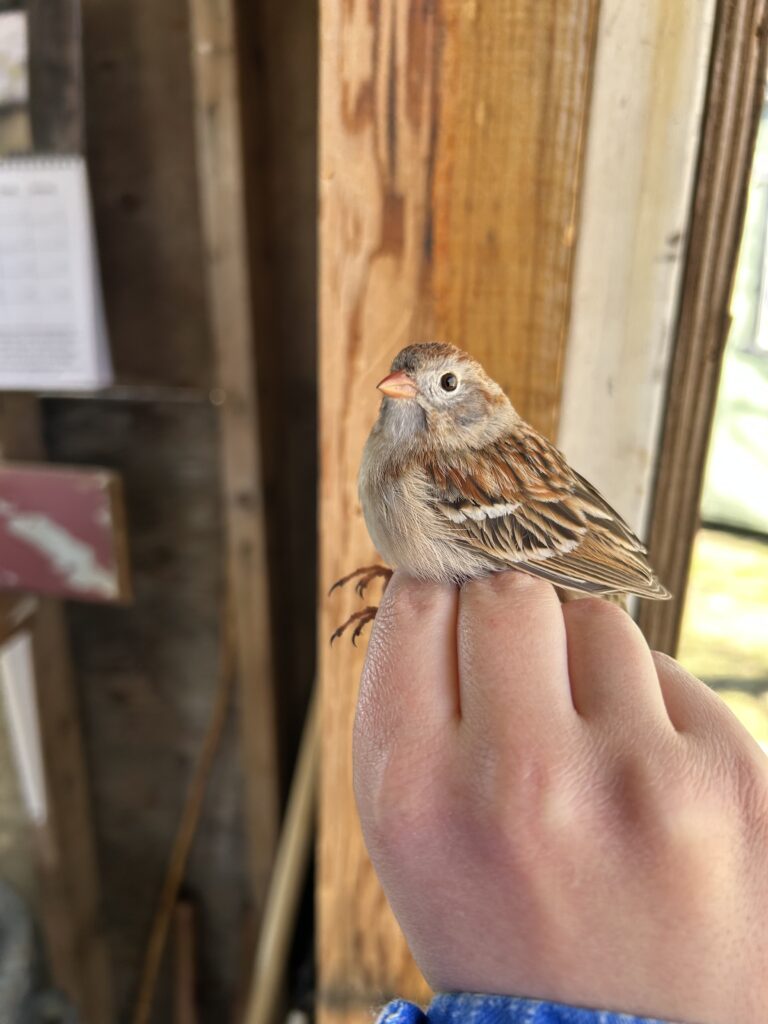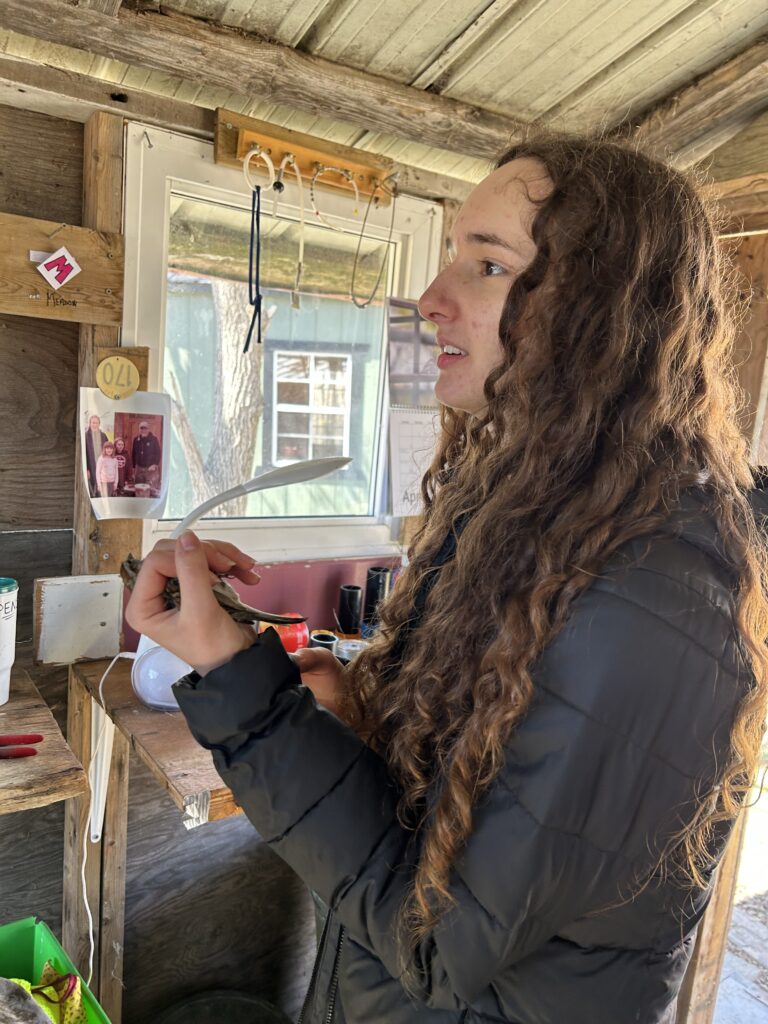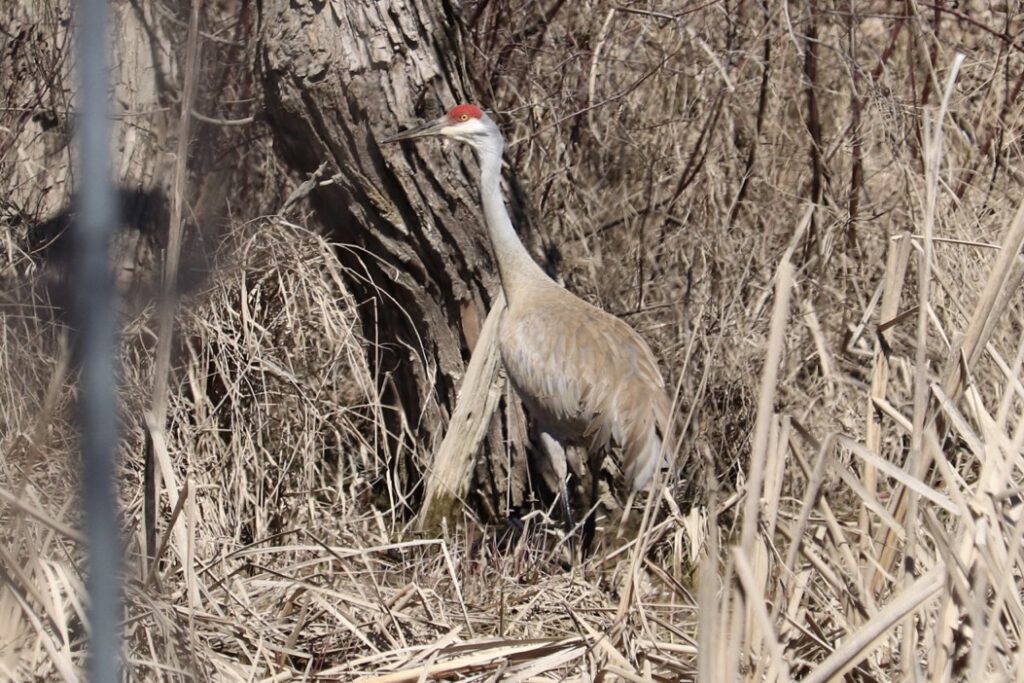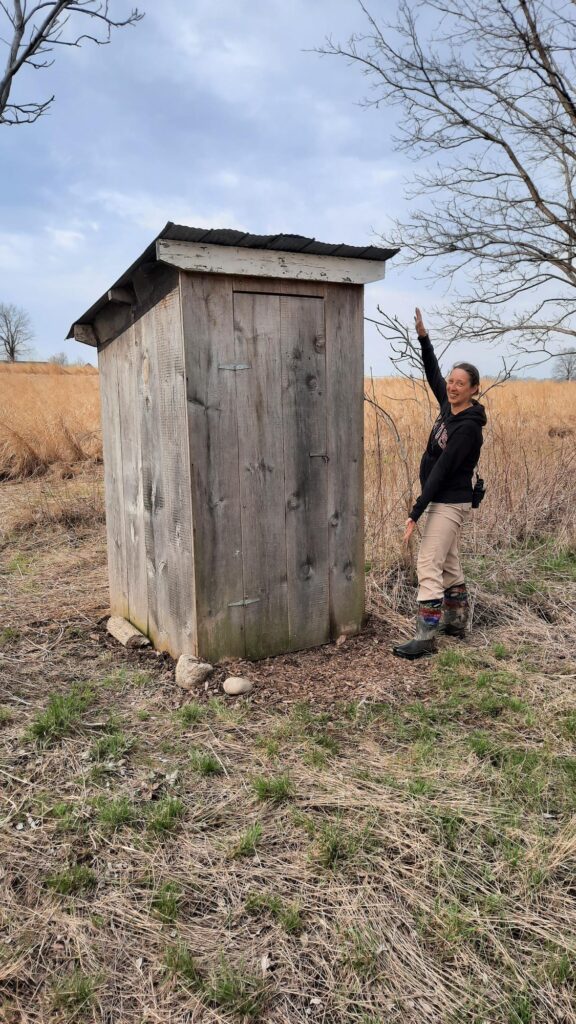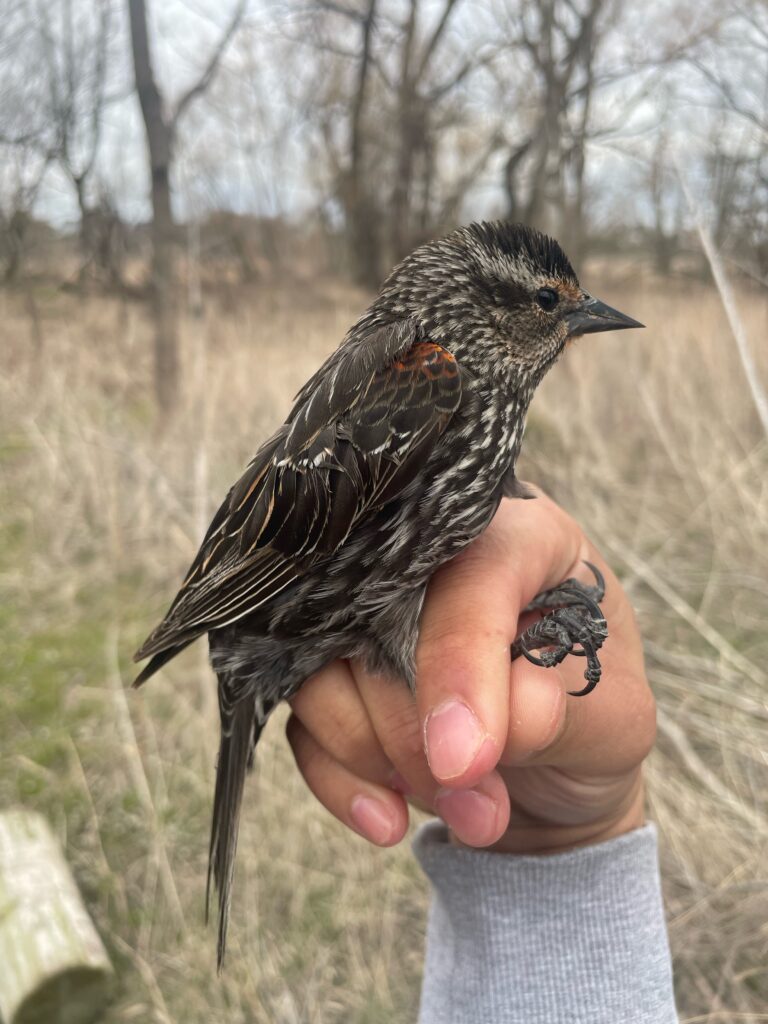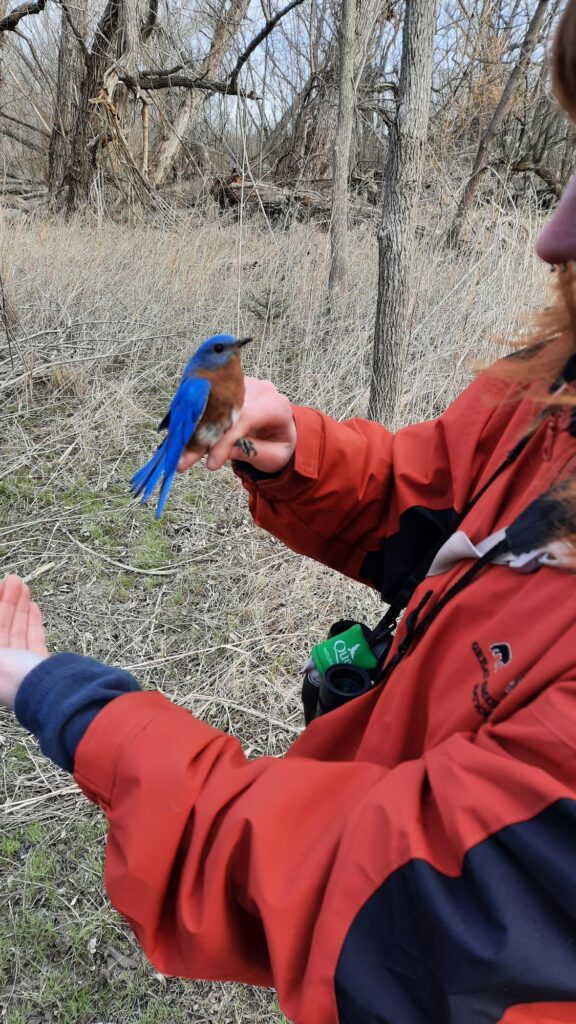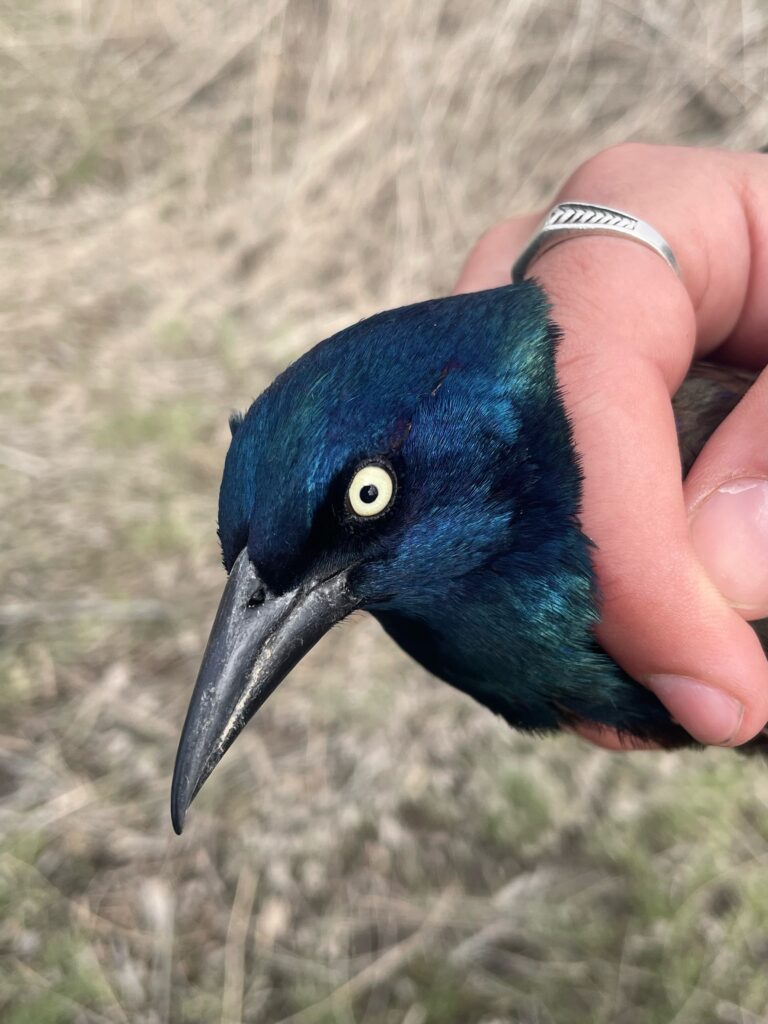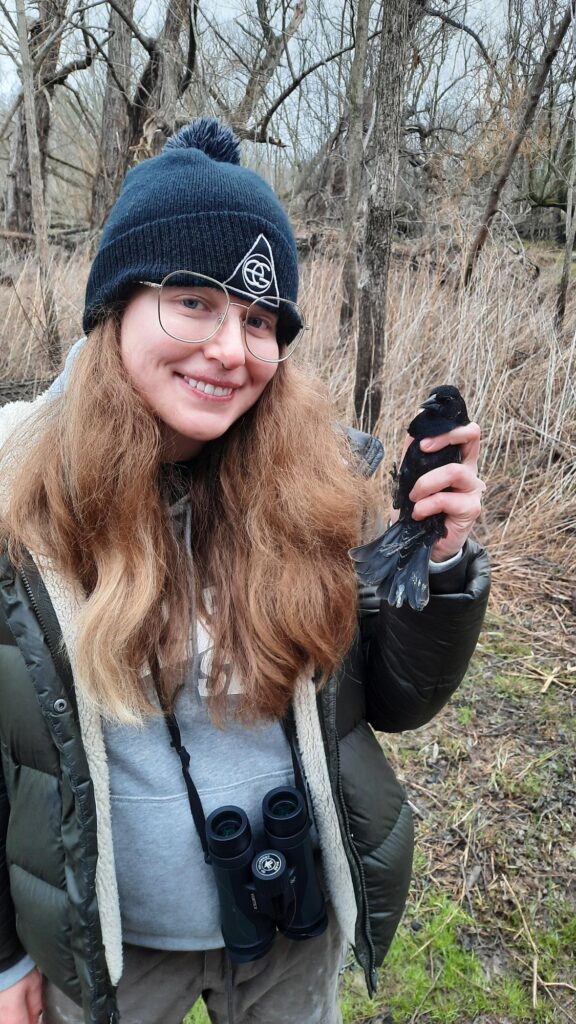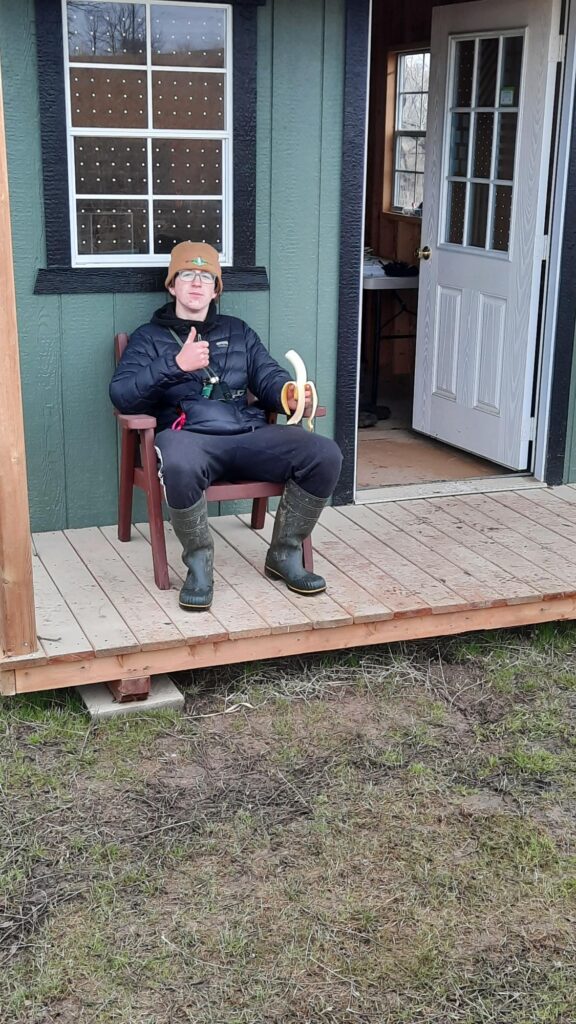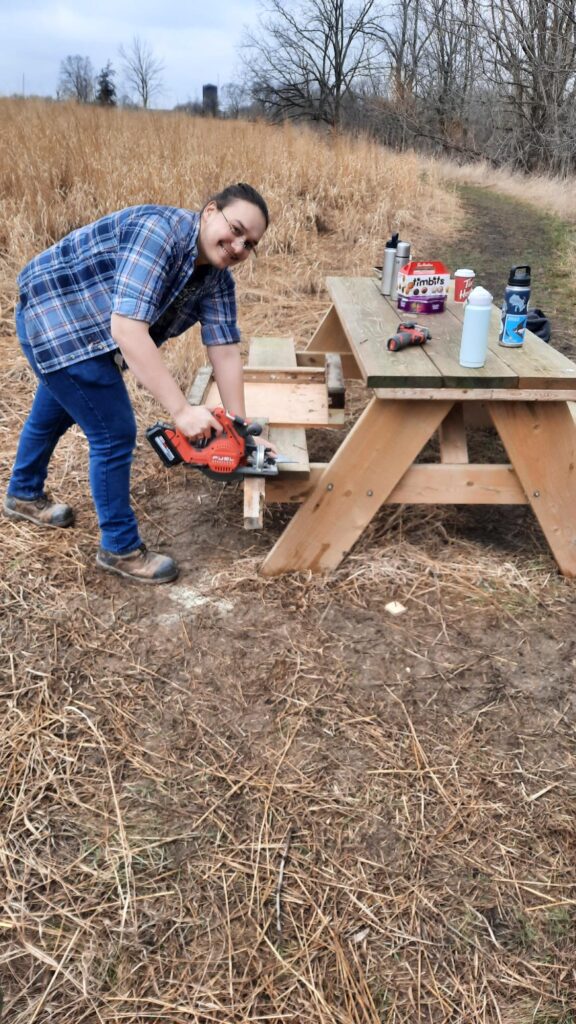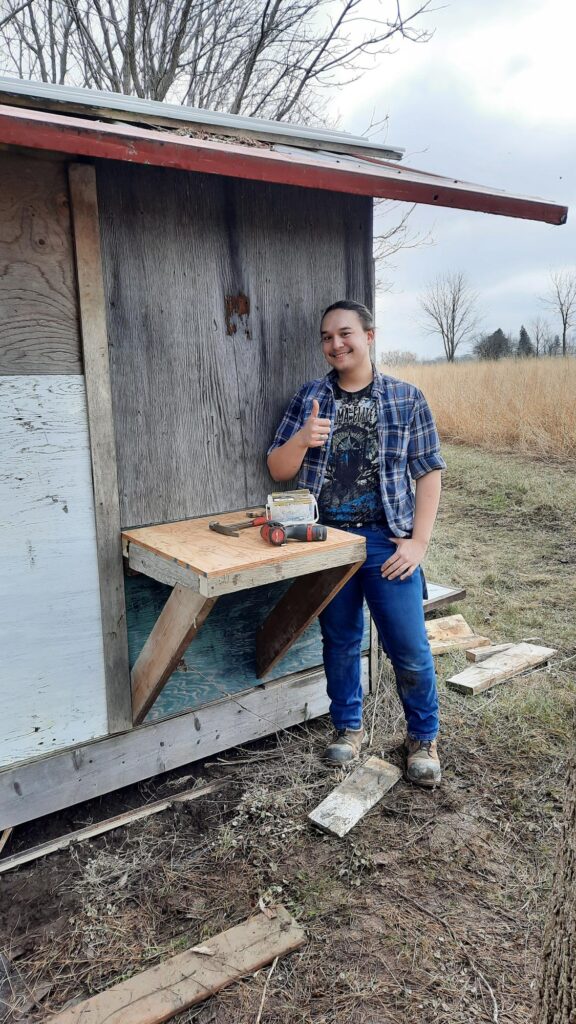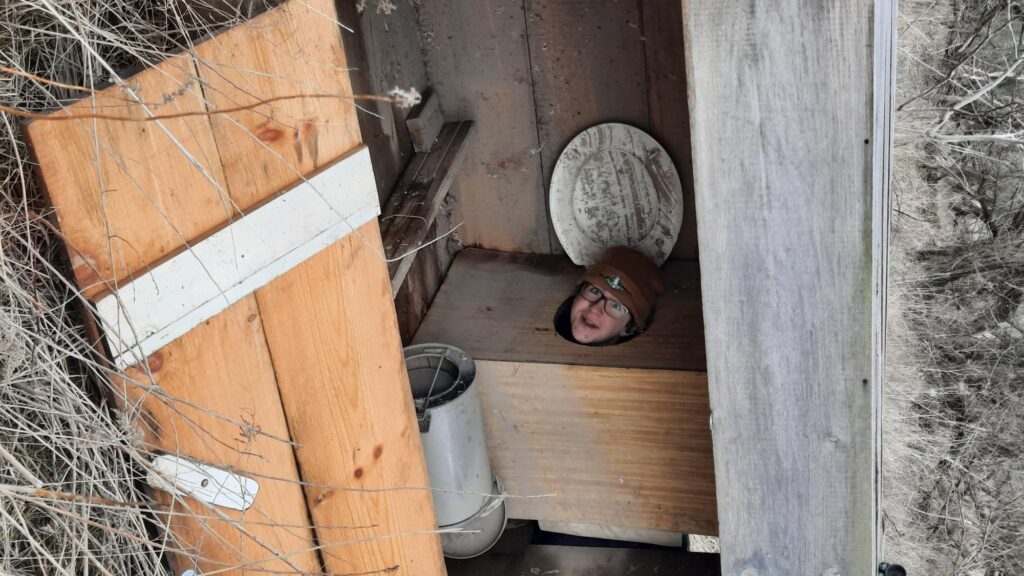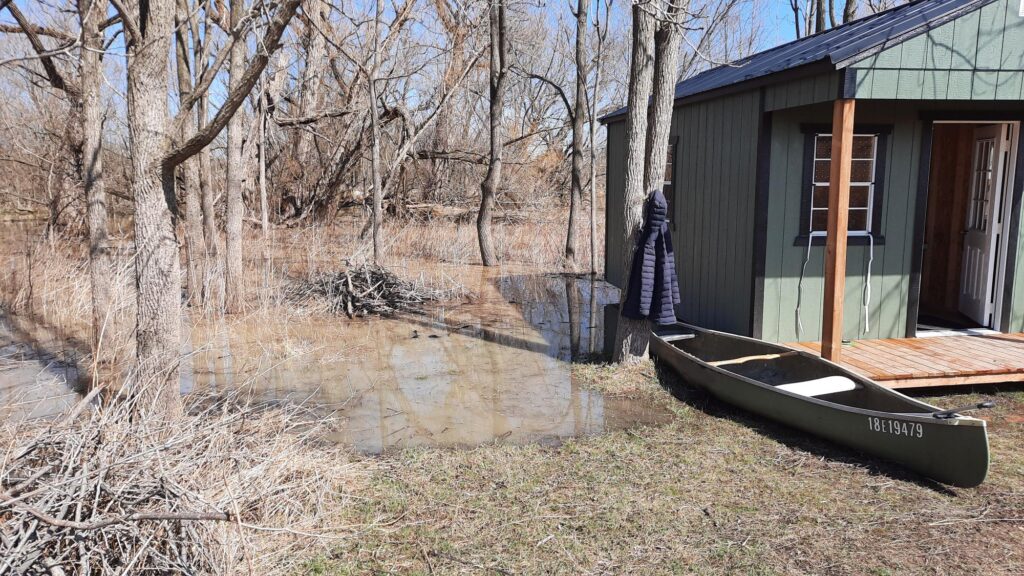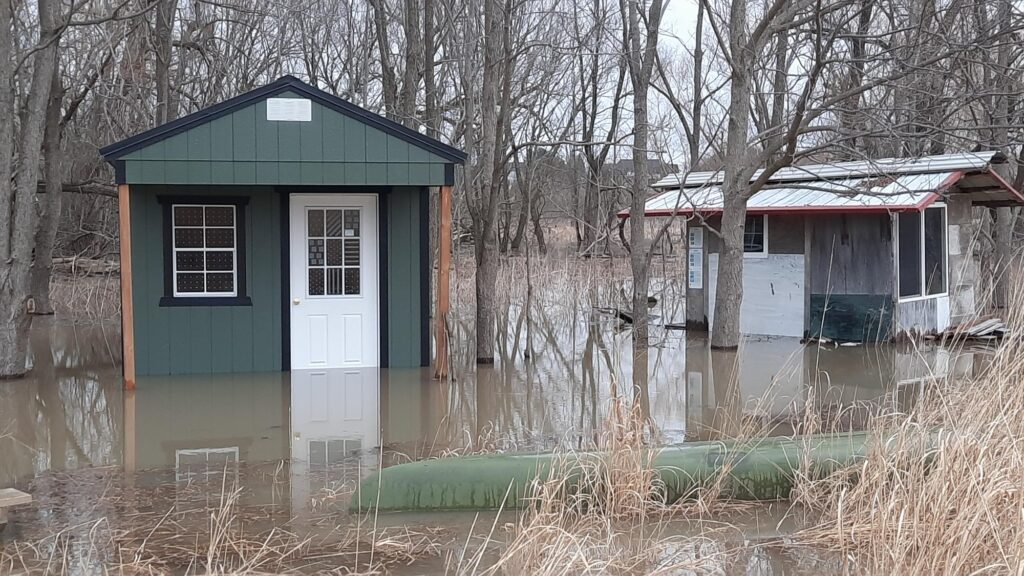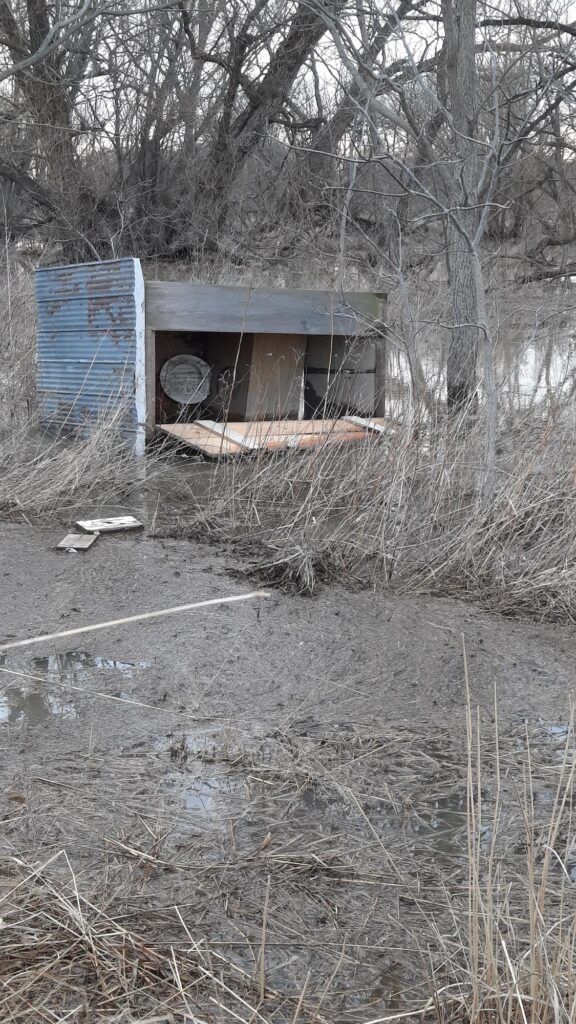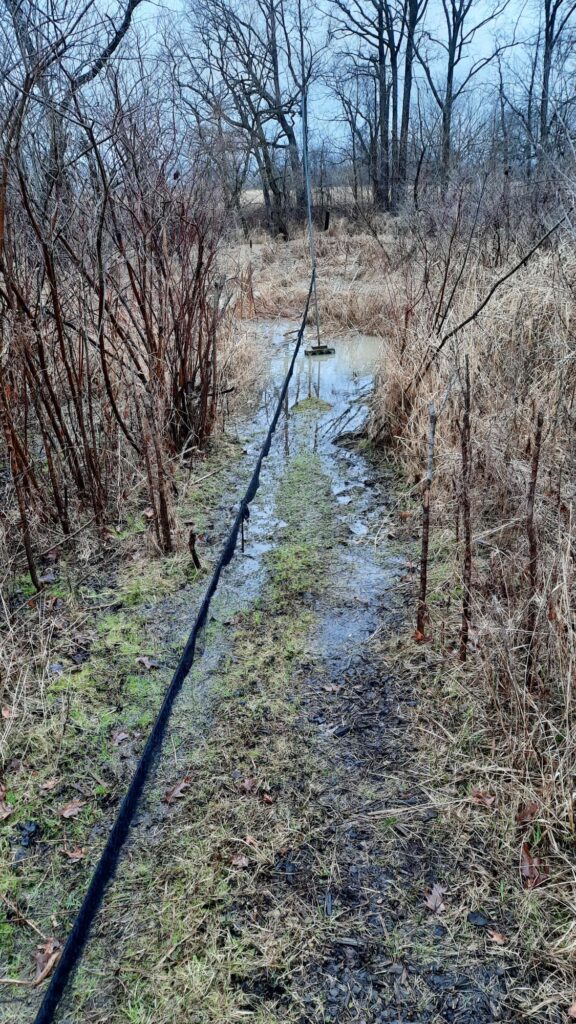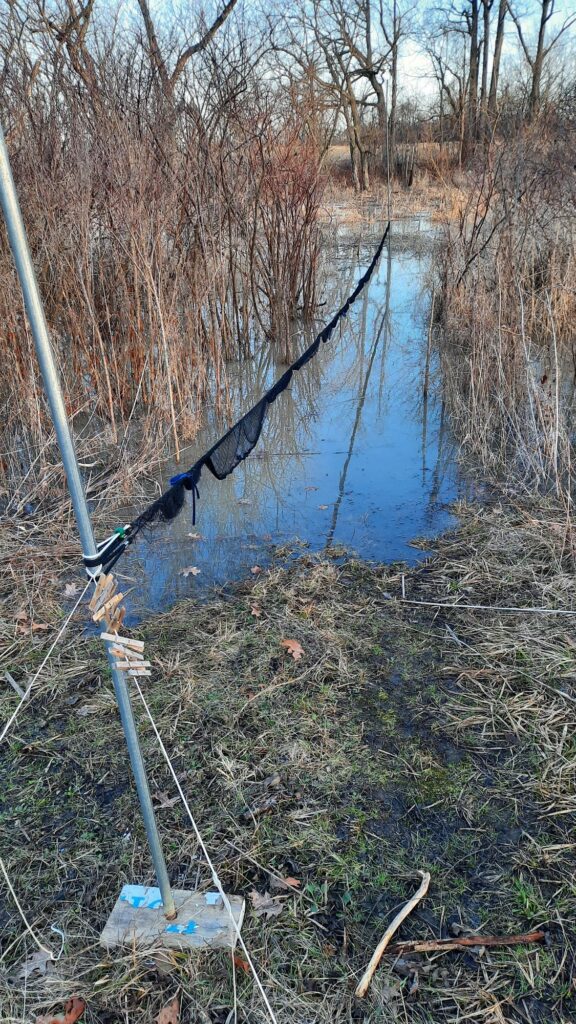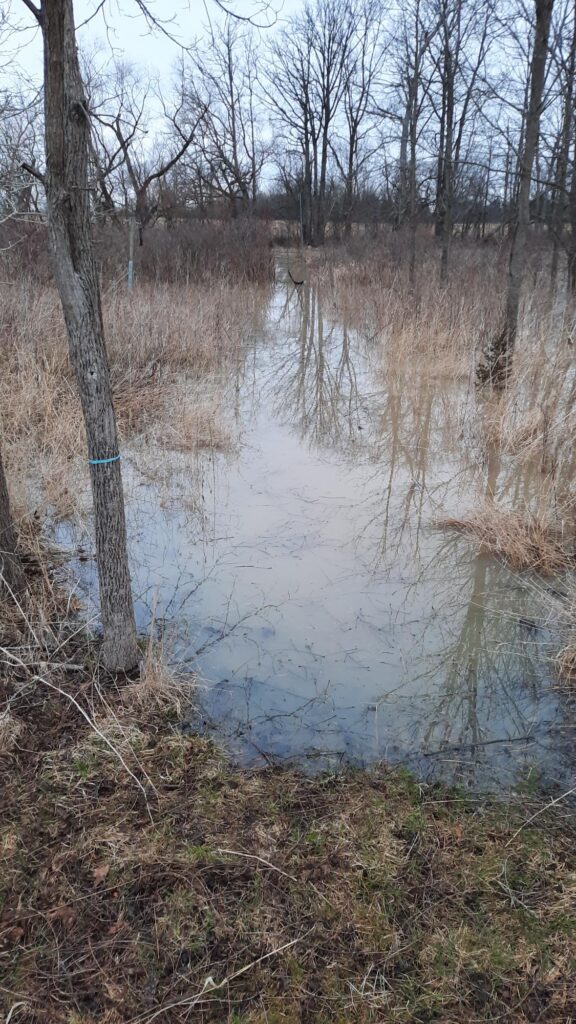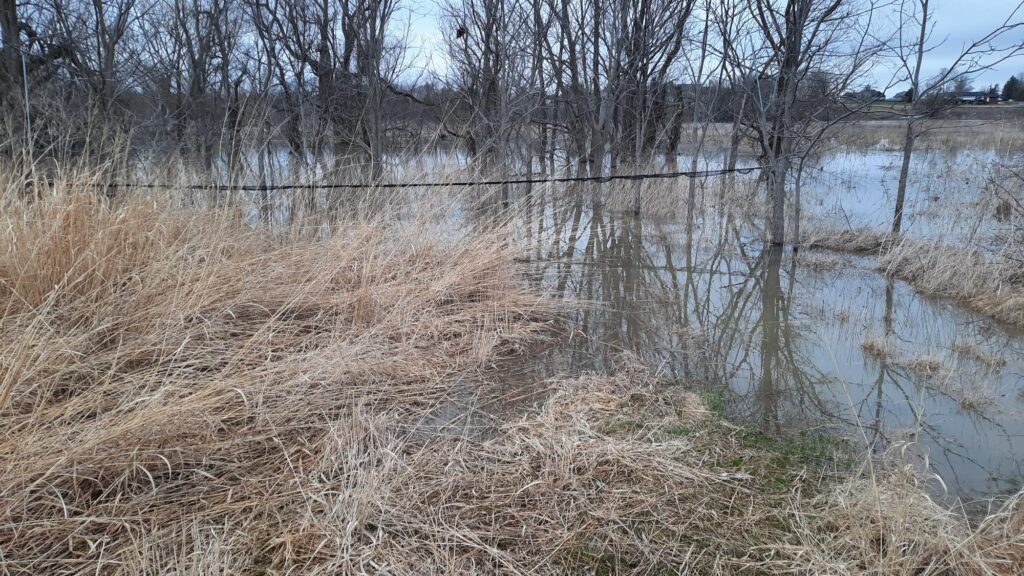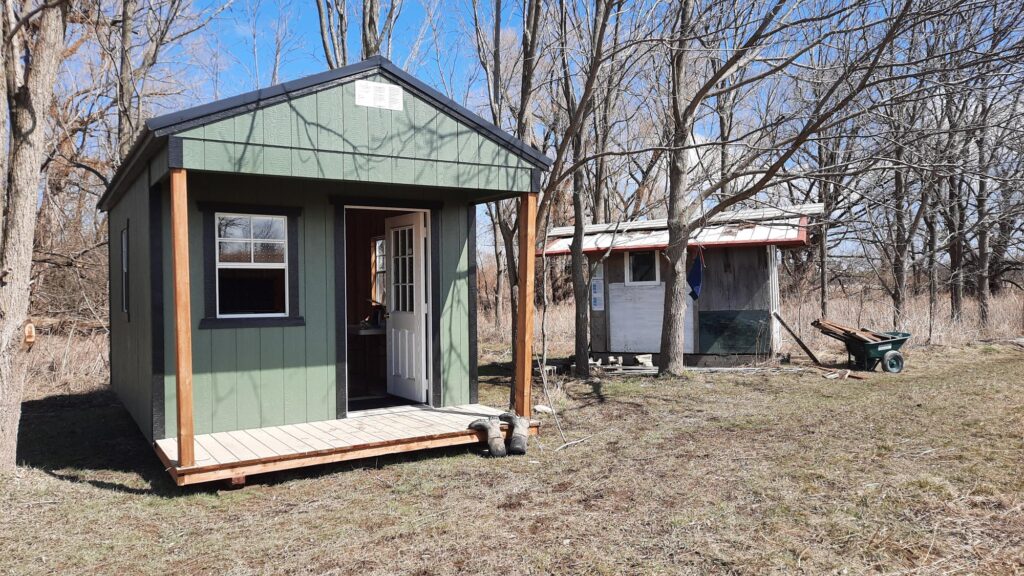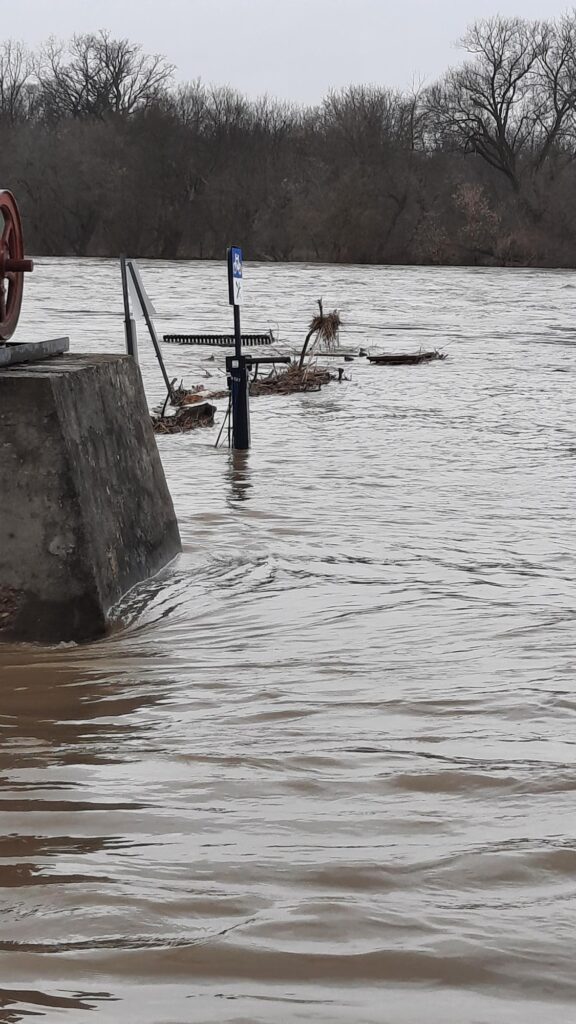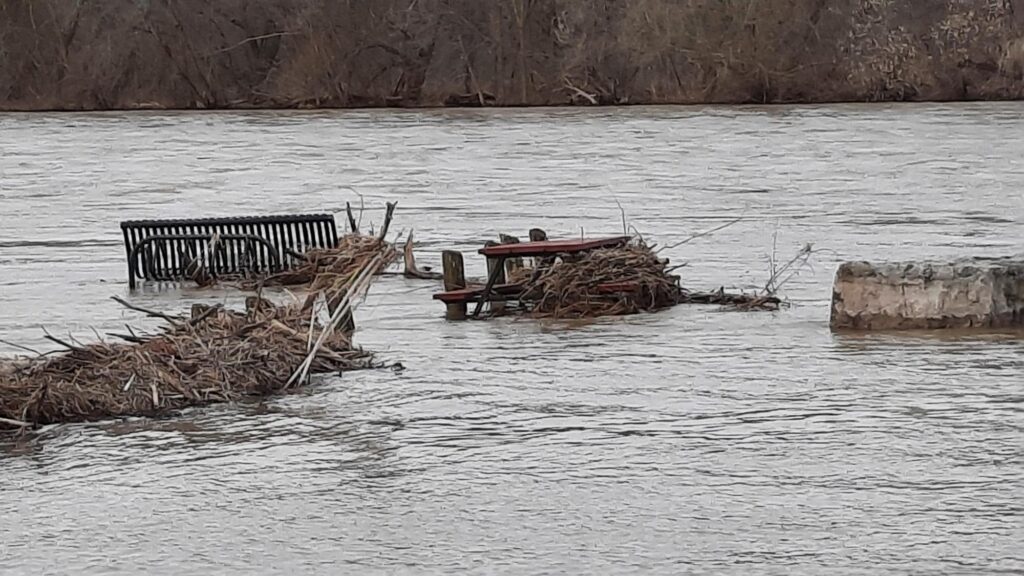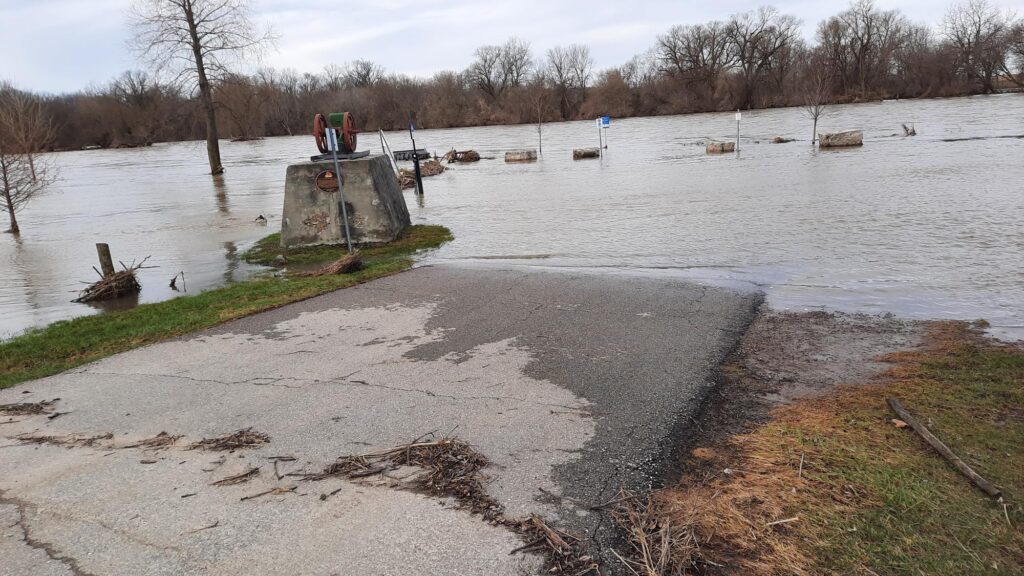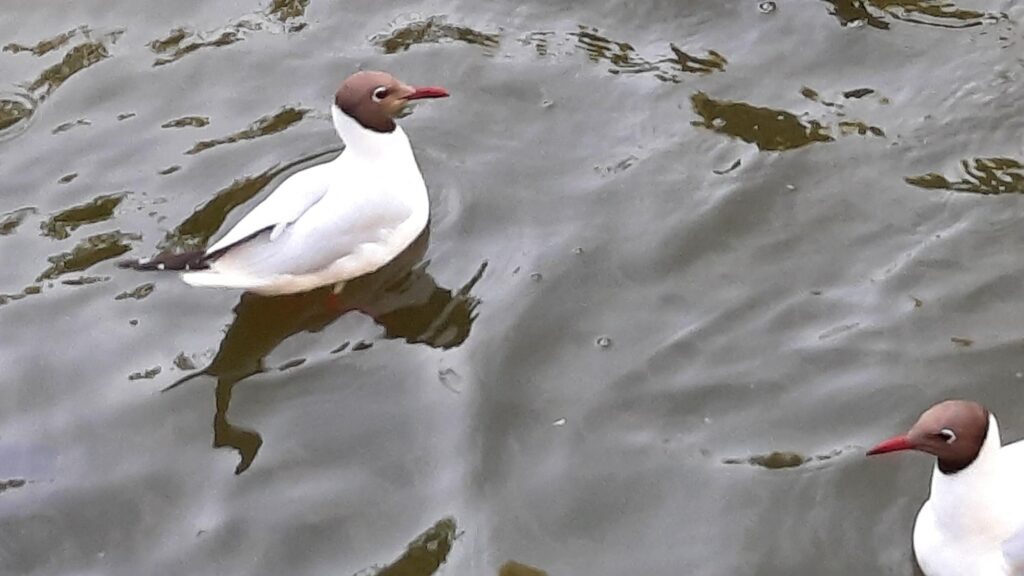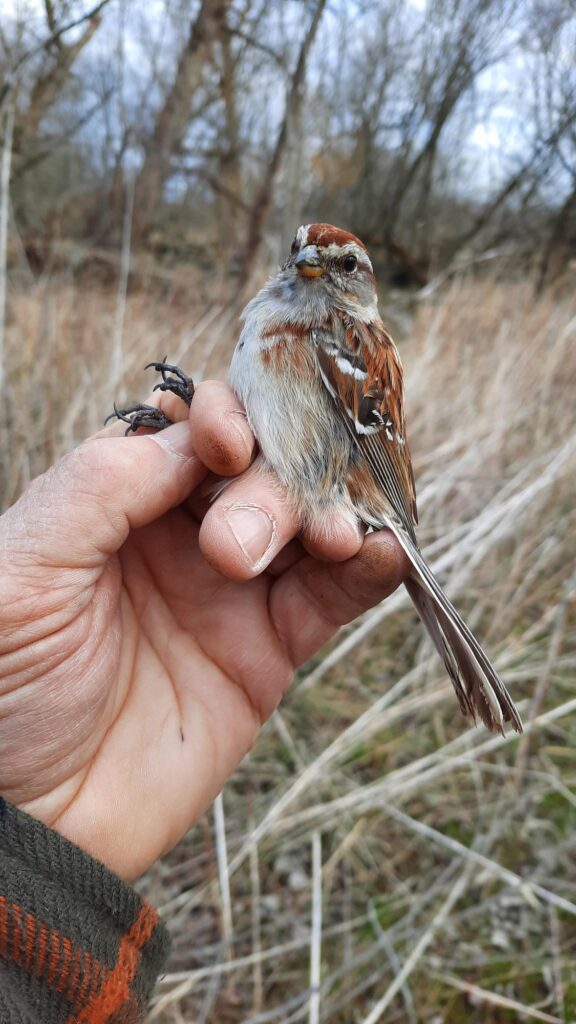
Lousy conditions, yes, but life must go on. A pair of tree swallows checking out a nest box getting ready to nest. -KDC
The fairly lousy April weather continues with temperatures going from -3 C. on the night of the 16th/17th up to +20 this morning. But the most aggravating thing has been the wind with gusts up to 53 kph this morning, billowing many of the nets so they weren’t worth opening. Still, this is the hand we’re being dealt this year and we just have to play it.

The swallow carries a length of straw that is much wider than the nestbox opening – it’s interesting to watch how they can get it into the hole. -KDC
Generally banding has been lousy, even though the 17th showed promise. This promise was dashed in the next two days but….on the 18th 3 keen observers, Irsha, Ethan, and Andy, through a census and then a river watch, turned up an amazing 62 species(!) including a first ever for the site – Red-necked Grebe – and a first for the Spring at the site – Wilson’s Snipe. As well, they had a number of firsts for the season: Green-winged Teal, Caspian Tern, Sharp-shinned Hawk, Merlin, Ruby-crowned Kinglet, Brown Creeper, Vesper Sparrow. I can’t remember a species count this high at the Farm so early in the season.
But this didn’t translate to the netting area where “new” migrants have not yet shown up and we watch the billowing nets with increasing frustration. This has got to change….it’s just a matter of when.
April 17th; Banded 16:
1 Eastern Phoebe
1 Northern Flicker
1 Golden-crowned Kinglet
2 American Robins
1 Field Sparrow
1 American Tree Sparrow
2 Song Sparrows
1 Swamp Sparrow
5 Red-winged Blackbirds
1 Common Grackle
ET’s: 41 spp.
April 18th; Banded 3:
1 American robin
1 Brown-headed Cowbird
1 Common Grackle
ET’s: 62 spp.
Dave and Ethan Gosnell (and maybe Elaine?) redug the outhouse hole and got the outhouse back on its feet….so to speak. Dave even fixed the door. So we’re ready to go…whenever you have to.
April 19th; Banded 4:
1 Blue Jay
1 American Robin
1 American Goldfinch
1 Red-winged Blackbird
ET’s: 32 spp.
Rick


